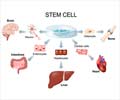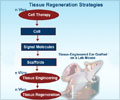There may be a future where faulty organs could be regrown from stem cells, and they would be an ethical and greener source of meat

van der Weele and coauthor Johannes Tramper point out that the rising demand for meat around the world is unsustainable in terms of environmental pollution and energy consumption, not to mention the animal suffering associated with factory farming.
van der Weele said she first heard about cultured meat in 2004, when frog steaks were served at a French museum while the donor frog watched on (http://tcaproject.org/projects/victimless/cuisine). Tramper has studied the cultivation of animal cells—insect cells mostly—in the lab for almost 30 years. In 2007, he published a paper suggesting that insect cells might be useful as a food source.
It is already possible to make meat from stem cells. To prove it, Mark Post, a professor of tissue engineering at Maastricht University, The Netherlands, presented the first lab-grown hamburger in 2013.
In the new Science & Society paper, van der Weele and Tramper outline a potential meat manufacturing process, starting with a vial of cells taken from a cell bank and ending with a pressed cake of minced meat. But there will be challenges when it comes to maintaining a continuous stem cell line and producing cultured meat that's cheaper than meat obtained in the usual way. Most likely, the price of "normal" meat would first have to rise considerably.
Still, the promise is too great to ignore.
Advertisement
Advertisement












